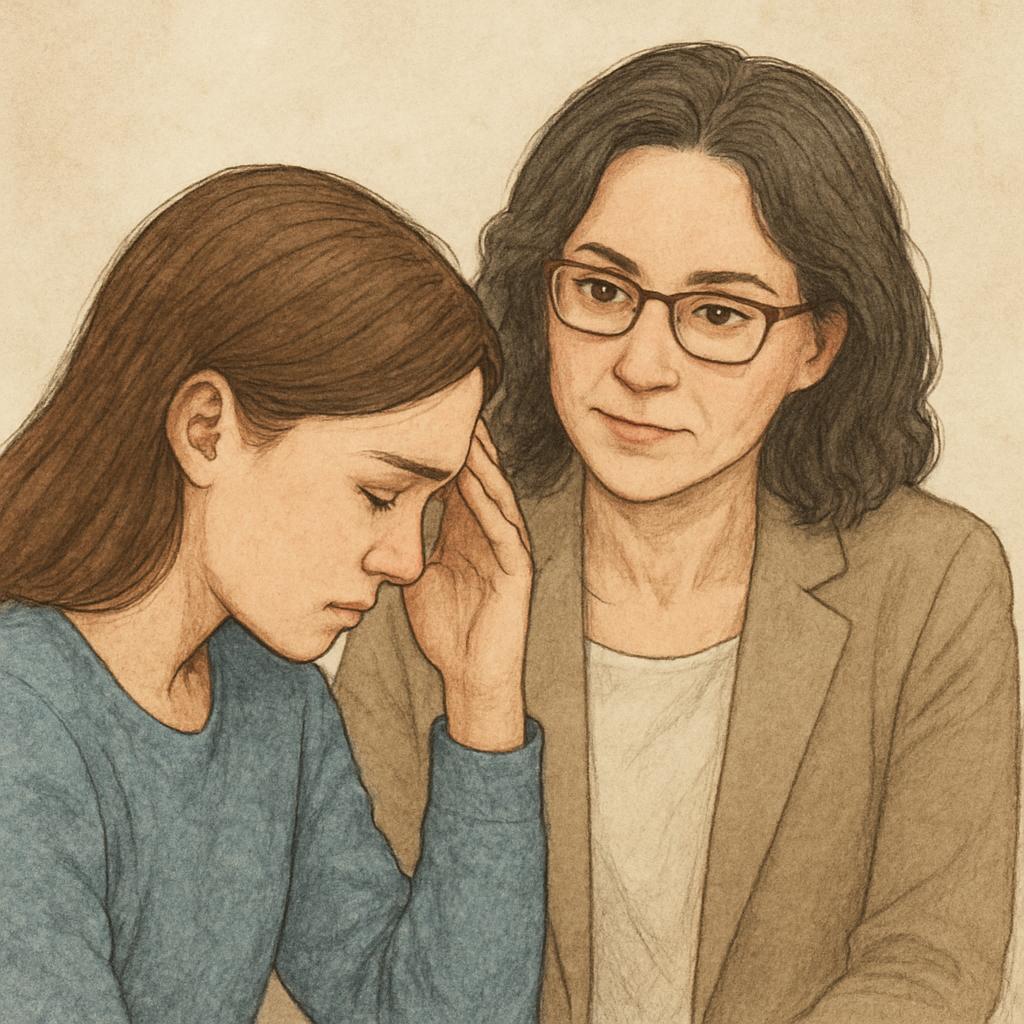
Listening Between the Lines: How Counsellors Can Help Clients Hear Their Unconscious
In the early stages of training, counsellors often focus on the fundamentals: building rapport, reflecting feelings, and staying in the client’s frame of reference. But as your experience deepens, you may begin to notice that what a client says is often only part of the story. Beneath their words lie pauses, slips, contradictions, and emotional undercurrents, clues to something deeper, unconscious thoughts that are shaping their behaviour or distress.
As counsellors, we are not mind-readers, and we must guard against arrogance in our interpretations. Yet we are trained to listen with an attuned ear, not only to what is said, but to what is implied, avoided, or repeated. Over time, we develop an ability to pick up patterns, make inferences, and use our own internal responses to small signals. This way, we can begin to sense what the client’s unconscious mind may be trying to get them to do, or not do.
This isn’t about analysis in the Freudian sense, where the therapist is the expert and the client the subject. Rather, it’s a collaborative, relational approach. The therapist becomes a curious, respectful witness, a person who listens not to decode, but to hold up a mirror where the client may begin to see things they didn’t see before.
The Unconscious in Everyday Speech
Clients often speak in ways that reveal unconscious tensions. For example, a client might say, “I always end up looking after everyone else,” while smiling tightly and adding, “but I don’t mind.” You might notice that the words and behaviour don’t quite match. Then again, a client tells the same kind of story across several sessions, stories in which they are always the Rescuer, or the Rejected one. These patterns aren’t accidental. They often signal something that the client is rehearsing over and over, not consciously, but as a way of managing unresolved perceptions of inadequacy.
As a therapist, you might gently say, “I notice a pattern where you seem to take on the caretaker role, even when it exhausts you. I wonder what would happen if you didn’t?” This isn’t an accusation, or an interpretation handed down like a verdict. It’s a tentative observation, offered with respect. It allows the client to consider whether their unconscious thoughts have been steering them toward certain behaviours for reasons they have not fully explored.
Intuition as a Clinical Tool
Intuition in therapy isn’t magic, it’s a type of informed, trained perception. It’s what develops when you’ve listened deeply to many stories, paid attention to emotional textures, and reflected on your own responses. Your intuition might signal that something a client is saying is loaded with more meaning than it appears. Or you may notice you feel unexpectedly sad or irritated in a session, clues that you’re picking up something that affects you, and the client isn’t putting into words.
Of course, we must always check our intuition against the client’s experience. We don’t “diagnose the unconscious.” But we do hold space for its influence. If you begin to sense, for example, that a client is unconsciously sabotaging their relationships to avoid abandonment, you might say, “I wonder if there’s a part of you that believes it’s safer to push people away before they leave you.”
The client may reject the idea, consider it, or return to it later. Your job isn’t to convince, but to offer these insights with unconditional positive regard and curiosity, allowing the client to decide what fits.
Resistance and Protection
It’s also important to remember that the unconscious defends as much as it reveals. Clients may unconsciously avoid certain topics, change the subject or become vague or joking when a tender area is approached. This isn’t deceit, it’s Protection. The unconscious will only surface what it’s willing to reveal, often slowly and subtly. Our task is to work at the pace of the client’s inner readiness, not to pry open what’s hidden.
In this sense, counselling becomes a process of co-discovery. The therapist listens carefully, sometimes more carefully than the client can listen to themselves. And when the time is right, the therapist may suggest something that helps the client put language to a previously wordless experience.
The Role of Gentle Challenge
One of the most powerful tools for surfacing unconscious material is the gentle challenge. This might take the form of asking about contradictions, naming an emotional undercurrent, or simply noticing what hasn’t been said. For example: “You’ve talked a lot about what others need from you, but I’m wondering what you need from them?” This kind of question can help bring a suppressed part of the self into awareness, sometimes for the first time.
When done with care and empathy, these small challenges can help the client turn toward recognising parts of themselves they’ve long ignored or hidden. And in doing so, they begin to move toward greater wholeness.
Conclusion
As someone interested in and reading about counselling, you are gradually learning to be present, to be empathic, and attuned. Over time, you will learn to listen to what is said, and what is unsaid. You’ll begin to trust your sense of when a client’s words are brushing against something deeper and darker.
A counsellor’s role is not to interpret the unconscious like a puzzle to be solved, but to reflect back what you hear with warmth, neutrality, and gentle curiosity. In doing so, you offer the client the gift of being heard not just on the surface—but at the level where real change begins.
Thank you for reading this. if you would like written advice on a personal issue, drop me a line.
🛑 Disclaimer:
This post is a social media newsletter and not a substitute for counselling or emergency support.
If you’re struggling with your mental health, please contact your GP or call 111 for urgent help.